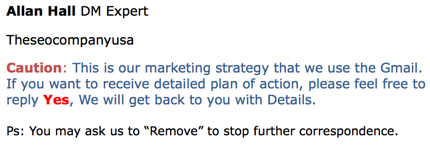July 2017: The month in email
August is here, and as usual, we’re discussing spam, permissions, bots, filters, delivery challenges, and best practices.
One of the things we see over and over again, both with marketers and with companies that send us email, is that permission is rarely binary — companies want a fair amount of wiggle room, or “implied permission” to send. There are plenty of examples of how companies try to dance around clear permissions, such as this opt form from a company we used to do business with. But there are lots of questions here: can you legitimately mail to addresses you haven’t interacted with in 5 years? 10 years? What’s the best way to re-engage, if at all?
We frequently get questions about how to address deliverability challenges, and I wrote up a post about some of the steps we take as we help our clients with this. These are short-term fixes; for long-term success, the most effective strategy is sending email that people want and expect. Engagement is always at the core of a sustainable email program.
We’ve also discussed the rise of B2B spam, and the ways in which marketing technologies contribute to the problem. B2B marketers struggle to use social and email channels appropriately to reach customers and prospects, but still need to be thoughtful about how they do it. I also wrote about some of the ways that marketing automation plugins facilitate spam and how companies should step up to address the problem. Here’s an example of what happens when the automation plugins go awry.
I wrote a few posts about domain management and the implications for security and fraud. The first was about how cousin domain names can set users up for phishing and fraud, and the second was a useful checklist for looking at your company’s domain management. We also looked at abuse across online communities, which is an increasing problem and one we’re very committed to fighting.
I also highlighted a few best practices this month: guidelines for choosing a new ESP and active buttons in the subject line for Gmail.
And finally, we celebrated the 80th birthday of the original SPAM. If you’re a regular reader of this blog, you probably already know why unwanted email is called SPAM, but just in case, here’s a refresher….
